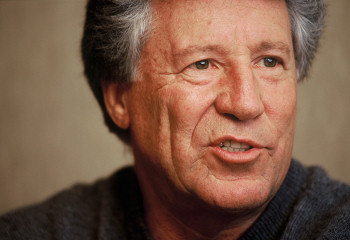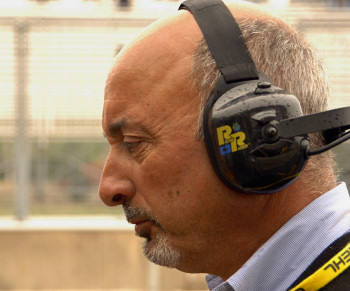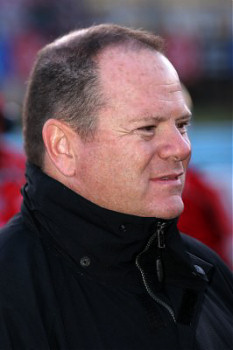The Way It Is/ Listening to some prominent voices for a positive approach to American open-wheel racing
by Gordon Kirby As any regular reader knows, I'm as skeptical as anyone about reunification ever happening between IRL and Champ Car. But I also know a single, united Indy/Champ car series is the only way American open-wheel racing can begin to regain its lost position in the hearts of the fans and as a professional sports business.
As any regular reader knows, I'm as skeptical as anyone about reunification ever happening between IRL and Champ Car. But I also know a single, united Indy/Champ car series is the only way American open-wheel racing can begin to regain its lost position in the hearts of the fans and as a professional sports business.
Neither series enjoys the eclectic mix of tracks and events that made the old CART PPG Indy Car World Series such a fine form of racing. In CART's heyday the broad mix of racetracks comprising superspeedways, short ovals, road courses, street circuits and airport courses made the series the world's most challenging motor racing championship. Today, Nigel Mansell likes to tell people that his 1993 CART championship means more to him than his '92 F1 world title because he believes his CART championship was the more demanding challenge.
My longtime colleague Nigel Roebuck is one of the world's most respected racing writers, specializing in Formula One. He used to be a big fan of the Indy 500 and the old CART series. "In the late eighties and nineties, it was the world's best racing series, no doubt about it," Roebuck remarks. "It's sad to see what's happened over the past ten years."
The CART series drew big crowds for all its races from Long Beach to Milwaukee because of its reputation for being the toughest test of a driver or team and also because of great names like Andretti, Unser, Foyt, Mears, Fittipaldi, Rahal, Sullivan and Mansell. CART also enjoyed big fields of twenty-six and more cars, most of them very competitive. Back in 1991, for example, CART's race at Laguna Seca was sold-out, the ticket office closed on raceday. But at the turn of the century, there were a few years of sharp decline in attendance at Laguna and Champ cars no longer race at the classic California road course. Times have changed radically.
"It was a phenomenal series in retrospect when you look back," Mario Andretti remarks. "Remember at one point Luca Montezemolo and Ferrari were disgruntled with Formula One and he was seriously thinking of moving to CART?"

© Gary Gold
A few years later around the time Mansell defected from F1 for two years in CART, Ayrton Senna entertained the same thoughts. At Roger Penske and Emerson Fittipaldi's invitation, Senna tested a Penske Indy car and was impressed. The great Brazilian was interested in racing an Indy car, but was killed at Imola before anything more could be discussed with Penske.
"I remember when Senna tested one of Penske's cars in the early nineties," Andretti recalls. "He was intrigued by what it was all about and wanted to give it a try. He really enjoyed the car and was interested in doing some races."
A decade and a half later, no F1 driver or team has any interest at all in American open-wheel racing which has been totally swamped domestically by NASCAR. Times have indeed changed dramatically and four-time Indy 5000 winner and three-time CART champion Rick Mears joins Andretti in wishing for a return to the old days.
"It's a shame," Mears says. "I feel that CART was the best series in the world. Obviously, NASCAR and Formula One will argue against that, but as far as the level of competition, the quality of the teams and the racing, I feel that it was the best in the world. IRL is good also, but still, my personal point of view is even 'though I love ovals, I like road courses too, and the opportunity of being able to do both made it a very challenging series.
"To me, if you look back, when NASCAR really started taking off, CART was taking off too," Mears adds. "We had just reached a plateau and I felt like we were on the verge of making another big step. Remember, NASCAR started before we did. CART came along and had to try to build the bottom up to meet the top, instead of taking the top down to meet the bottom, which would have been very easy to do by restricting it. But that wouldn't have enhanced the racing and the competition. They had to generate more money in the series, more sponsorship, better racing and more equality between the teams, and I think CART did a very good job of that.

© Gary Gold
Mears refuses to point a finger at anyone but continues to hope for a unified series to occur sometime soon based on CART's mix of superspeedways, short ovals, road courses, and street and temporary circuits. "I understand both sides and why and what both sides wanted," Rick says. "Both sides had legitimate reasons. But I just don't think it was right to hurt the industry. Hopefully, at some point like we've hoped all along, it will all come back together and put open-wheel racing back at the front of the map. I think it will happen at some point. It's just going to take time.
"You've got to have one league but you've got to make it unique," Mears adds. "Even NASCAR has a couple of road races because there are a lot of people who like road racing. You need that combination of both to keep our series unique and make it what it was and should be again."
Andretti agrees completely with Mears on this point. "There's something to be learned from all that was thrown away," Andretti remarks. "It's the proof of what this could be. We're not just going back and living in the past. We're saying this is what the series could be and should be."
Andretti is adamant that a single series is the only realistic way forward. "To me, it's so clear what needs to be done," Mario says. "They need all these names mixed up together, competing against one another. Bourdais against Hornish, Tracy against Kanaan, Marco against young Rahal, Katherine Legge against Danica, and so on. That's what you need. Put them all together and you'd have so much to talk about."

© Gary Gold
"I agree with Mario and Rick," Rahal says. "We need a single, unified series with a proper mix of oval races and road course and street races. From the points of view of the fans and the media, and certainly commercially, I believe it's the only way forward. And I think Mario's right when when he says we need to see Hornish racing against Bourdais, and Marco racing against Graham, and Danica against Katherine Legge. The dynamics and the intrigue and drama that could be created by those pairings would be great. In my mind, just having all those drivers competing against one another would do more to capture the interest of the fans and the media than any other single thing. The dynamics of all that would drag everything up with it.
"I find it funny," Rahal adds, "that in any other business the customers are listened to and there's an attempt to grant those wishes. When you have every major component of the sport calling for the same thing, it should happen on that basis only. So we keep our fingers crossed."
Chip Ganassi's race teams compete these days in NASCAR, IRL and the GrandAm series. Ganassi's CART team won four championships in a row from 1996-'99 with Jimmy Vasser, Alex Zanardi (twice) and Juan Montoya during CART's fading but still great days. Ganassi also won the Indy 500 with Montoya in 2000.
"What I don't understand," Ganassi observes, "is that in one breath people make these claims about open-wheel racing and what their view of it is. I guess everybody that's got an extra twenty million dollars thinks they know more than anybody else what open-wheel racing should be. They always say they're so interested in the sport but I think they're interested in the sport as long as the sport is what they want it to be. They want to make the sport what they think it ought to be, but I think they're only interested in a sliver of the sport. They're not interested in the sport as a whole.

© Leavitt/LAT USA
"Let's face it," Ganassi adds, "when you look at the commercial sponsorship side, or the business model of open-wheel racing, I'm afraid to say it doesn't exist. There is no business model and that makes it very difficult to make it viable in the longterm. I would love to see the sporting aspects of open-wheel racing be exploited, like Mario says, with Hornish against Bourdais, Marco against Graham Rahal, and all the possible rivalries between the teams as well as the drivers which would make the level of competition so much better and so much more saleable. The fact of the matter is until open-wheel racing is made a viable business by the powers-that-be, it's simply dying a slow death."
It seems clear to most of us that the only way American open-wheel racing can ever become recognized again as a serious, professional sport and regain its commercial health is by bringing the two series together like it used to be when it had great appeal to top drivers, fans, sponsors and manufacturers around the world.
Having covered the whole sad story from CART vs. USAC through IRL vs. CART, I agree with Andretti, Mears, Rahal and Ganassi. If any of us are ever to hold our heads high again, proud to be involved with American open-wheel racing, whatever it might be called, there must be a unified, all-purpose series with three 500-mile races, another two or three, first-class oval races--ideally Phoenix and Milwaukee reborn--as well as a brace of street races and a few key races on permanent road courses.
Whoever's in charge, it should comprise exactly the eclectic combination of races and events which made the series what it was at the height of CART's popularity. "That's the only solution," Andretti correctly concludes.
Auto Racing ~ Gordon Kirby
Copyright 2007 ~ All Rights Reserved
Copyright 2007 ~ All Rights Reserved
Top of Page